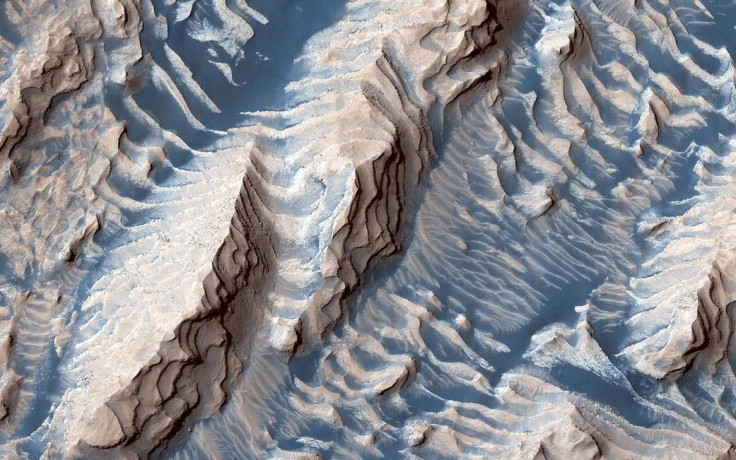NASA Mars Photo Shows 'Bigfoot' Remains On Red Planet?

Planet Mars remains to be a big mystery for scientists all over the world despite what we already know about Earth’s cousin.
We pretty much have a grasp of its geological makeup, atmosphere and current natural conditions. We know that Mars is dry, dusty and very cold. The Red Planet also has a very weak atmosphere that’s only one percent of the Earth’s density, 95 percent of which is composed of carbon dioxide.
The Red Planet also has no magnetic field which means radiation on Mars is deadly for humans while the weather there is always extreme. Despite all these facts, one thing remains unsure for most scientists and that’s whether they can know for sure that there’s life on Planet Mars.
Because of this, numerous alien believers and UFOlogists often create their own theories of finding life on Mars based on actual photos taken by space agencies such as NASA. One “discovery” is courtesy once more by Scott Waring, an alien theorist who is known for his out-of-this-world UFO ideas that he share on his website, ETDatabase.com.
His latest theory is that he has discovered a “primitive statue” of the mythological creature Bigfoot in a photo taken of Planet Mars. Per Waring, the photo, which was taken via the Mars Gigapan, clearly shows what looks like the mummified remains or a statue of the sasquatch or Bigfoot.
“I was checking out some Mars Gigapan photos when I noticed this primitive statue in the lower center of the photo. The face was unique...like a gorilla, but more human-like,” Waring said in his latest post.
Waring described the statue face to be similar to that of a gorilla’s but also compared it to the face of the viral grumpy cat because of its “long slanted eyes.”
Waring said that the figure he discovered is simply a statue and that it was there because it was created by alien species that once inhabited the Red Planet.
“Look at its thick arms which has a hand with a big thumb and fingers. Its lower leg area is much thicker and it looks like its feet were huge, like it was a bigfoot in its own right. Also if you look at its shoulders and shape of its back, it's very similar to a human back.”
However, Waring’s theory sould be taken with a grain of salt because most of his statements are often considered borderline outrageous. Even notable scientists have actually debunked most of his statements.
© Copyright IBTimes 2024. All rights reserved.





















